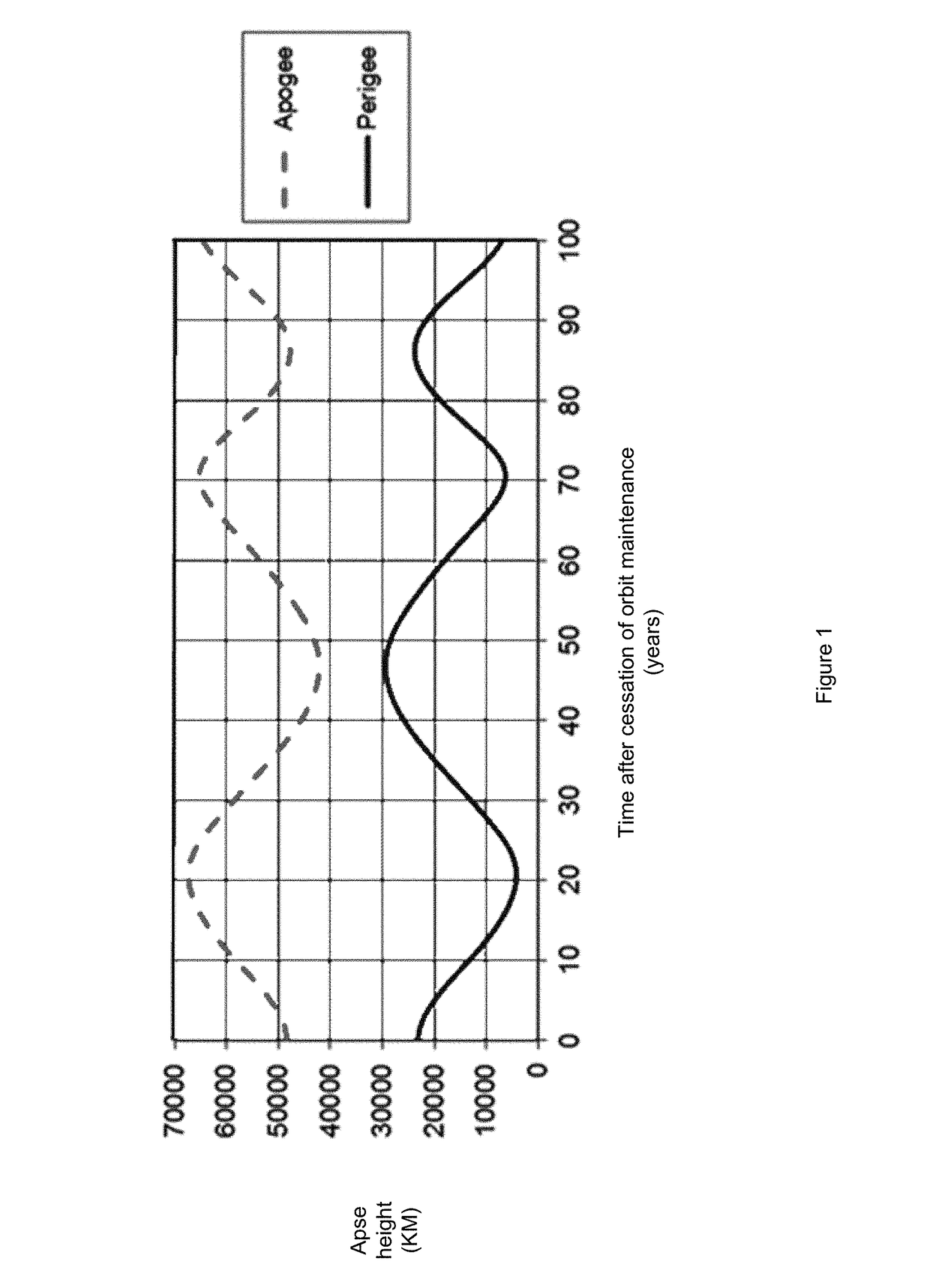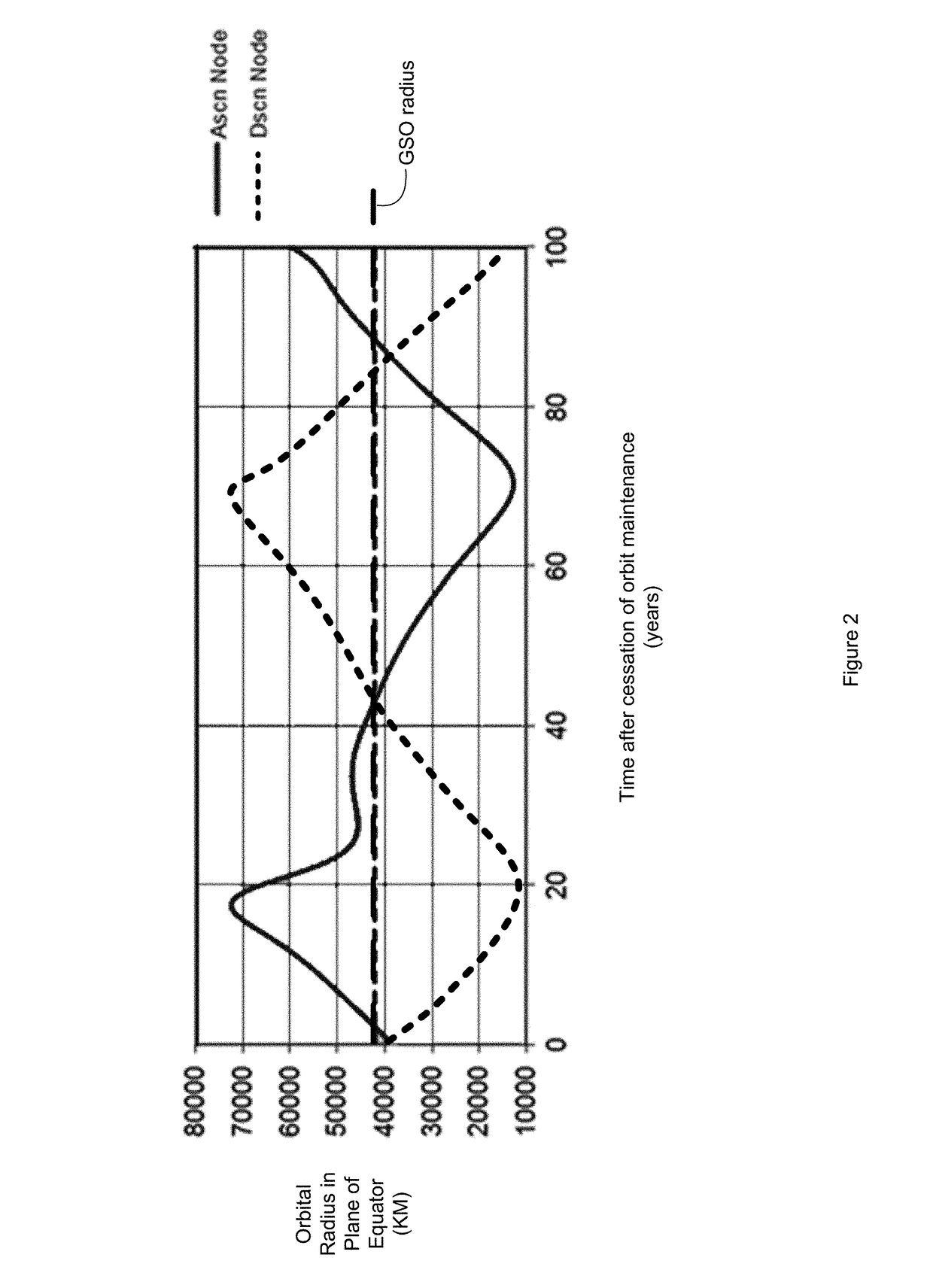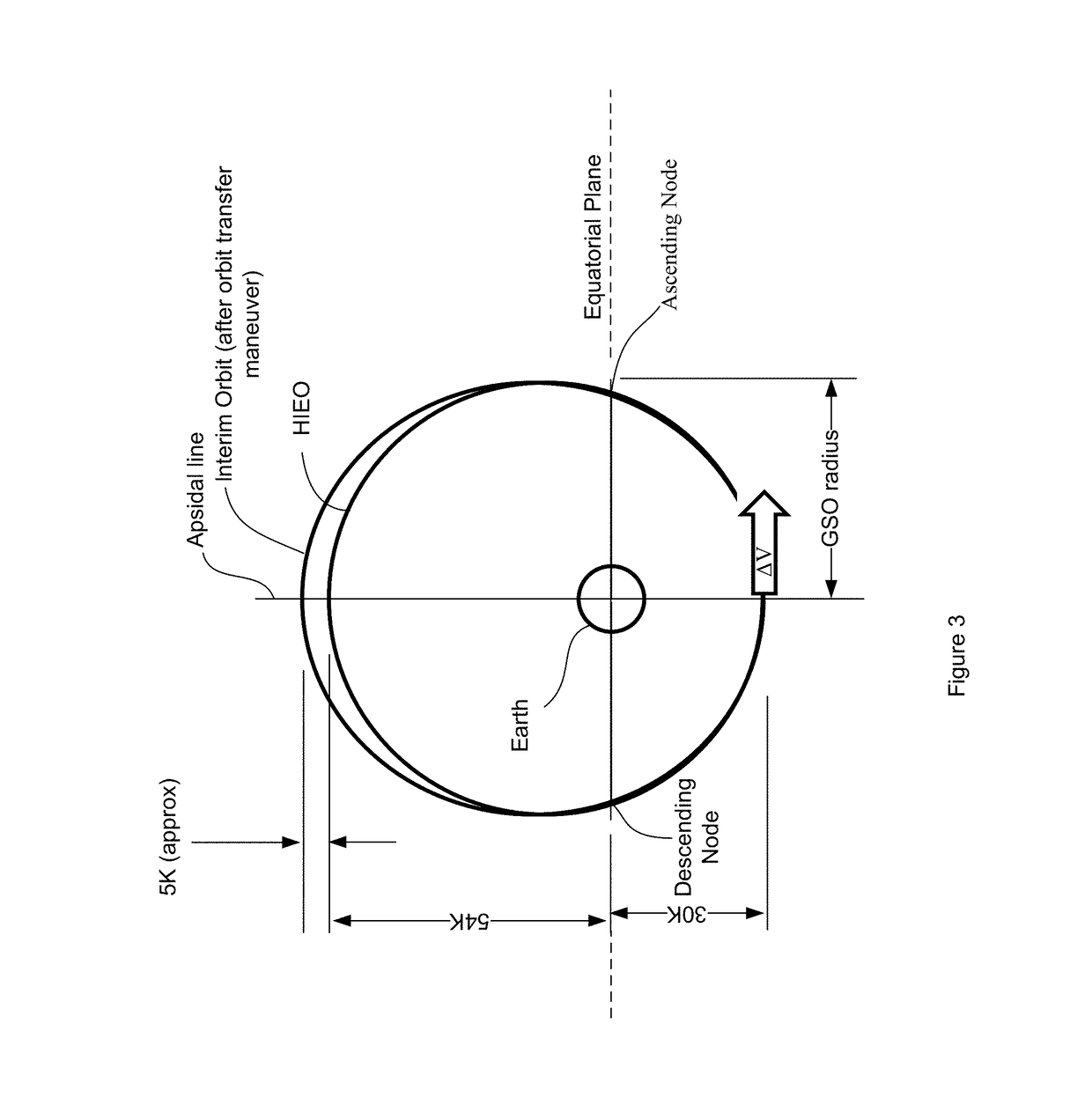Highly inclined elliptical orbit de-orbit techniques
- Summary
- Abstract
- Description
- Claims
- Application Information
AI Technical Summary
Benefits of technology
Problems solved by technology
Method used
Image
Examples
Embodiment Construction
[0033]Specific exemplary embodiments of the invention will now be described with reference to the accompanying drawings. This invention may, however, be embodied in many different forms, and should not be construed as limited to the embodiments set forth herein. Rather, these embodiments are provided so that this disclosure will be thorough and complete, and will fully convey the scope of the invention to those skilled in the art.
[0034]The terms “spacecraft”, “satellite” and “vehicle” may be used interchangeably herein, and generally refer to any orbiting satellite or spacecraft system.
[0035]The present disclosure relates to EOL disposal strategies beneficial for a satellite initially in a geosynchronous operational orbit that has a moderate to high eccentricity (from about 0.25 to 0.35) and high inclination (from about 70 degrees to 90 degrees). Such an operational orbit is referred to herein as a geosynchronous HIEO. To maintain a satellite in a geosynchronous HIEO orbit requires ...
PUM
 Login to View More
Login to View More Abstract
Description
Claims
Application Information
 Login to View More
Login to View More - R&D
- Intellectual Property
- Life Sciences
- Materials
- Tech Scout
- Unparalleled Data Quality
- Higher Quality Content
- 60% Fewer Hallucinations
Browse by: Latest US Patents, China's latest patents, Technical Efficacy Thesaurus, Application Domain, Technology Topic, Popular Technical Reports.
© 2025 PatSnap. All rights reserved.Legal|Privacy policy|Modern Slavery Act Transparency Statement|Sitemap|About US| Contact US: help@patsnap.com



